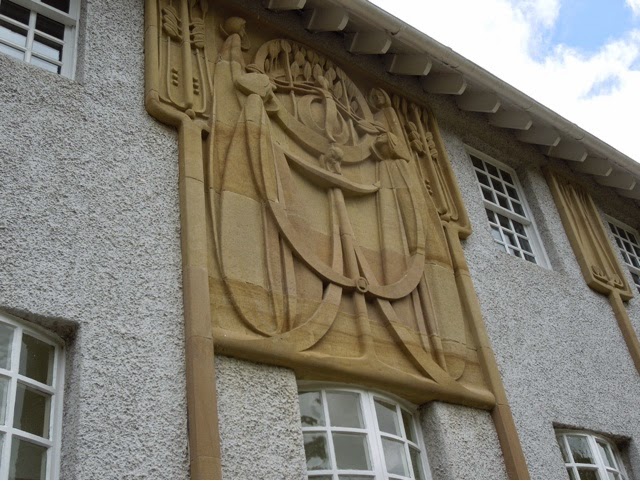It has long been famous for ironworks and steelworks; the local shipbuilding industry produced the Queen Mary, the Queen Elizabeth, and other fabled ocean liners.
Once polluted and plagued with some of the worst slums in Europe, Glasgow has been transformed. Urban development and the decision to locate the Scottish Exhibition and the Conference Centre here have brought great changes: Grime is being sandblasted away, overcrowding has been reduced, and more open space and less trafic congestion mean cleaner air.
Glasgow is "the greatest surviving example of a Victorian city" as John Betjeman and other critics have hailed Glasgow.
Glasgow is part of Strathclyde, a populous district whose origins go back to the Middle Ages. The fortunes of Strathclyde chaned in the 18th century, when the Clyde estuary became the gateway to the New World. Glasgow merchants grew rich on tobacco and then on cotton.
The center of Glasgow is George Square, dominated by the City Chambers that Queen Victoria opened in 1888. Sir Walter Scott dominates the square atop an 80 foot column. The banqueting Hall lavishly decorated, is open to the public.
THE BURRELL COLLECTION - This museum houses the mind-boggling treasures left to Glasgow by Sir William Burrell, a wealthy ship owner who had a lifelong passion for art. Burrell started collection art when he was 14, and his passion continued until he died at the age of 96, in 1958. He had varied tastes - Chinese ceramics, French paintings from the 1800's, tapestries,stained-glass windows from churches, even stone doorways from the Middle Ages. It is said that the collector liked everything.
He collected furniture,textiles,ceramics, stained glass, silver, art objects, and a room that was reconctructed from Sir William's home, Hutton Castle at Berwick-upon-Tweed.
HUNTERIAN ART GALLERY - This Gallery owns the artistic estate of James McNeill Whistler with some 60 of his paintings bestowed by his sister-in-law. It also boasts a Charles Rennie Mackintosh collection, including the architect's home (with his own furniture) on three levels, decorated in the original style.
HOUSE FOR AN ART LOVER - My favorite architect from the late 1800's is Charles Rennie Mackintosh. This house, which opened in 1996, is based on a unrealized and incomplete 1901 competition entry of Mackintosh. The impressive building, with its elegant interiours, was brought to life by contemporary artists and craftspeople.
KELVINGROVE ART GALLERY AND MUSEUM - This collection has been hailed as "one of the greatest civic collections in Europe". Traditionally, more than a million people a year have come to this museum in Kelvingrove Park, making it the most visited museum in the UK (outside of London).
Restored at a cost of $53million, the museum displays such important works as Salvador Dali's controversial painting "Christ of St John of the Cross". The galleries contain a superb collection of Dutch and Italian Old Masters.
Interesting to me were the two schools of art that grew in the 1870's when Glasgow was going through an economic boom. There were distinct contributors in the Architectural and interior design. This school was known as The Four (Spook School). It included Margaret MacDonald, Charles Rennie Mackintosh (husband of Margaret), Frances MacDonald (Margaret's sister) and Herbert MacNair. These four defined the Glasgow style and had a great impact on Art Nouveau.
The Glasgow Boys - 1880-1890's - Cannon of impressionist and post impressionist painting. They focused on rural, Glasgow scenes, and portraiture. They displayed a passion for realism and impressionism. Most prominent during this period were James Gutherie, E.A. Hornel, George Henry, and E.A. Walton. Their style and design was exquisite. 


 Elvis is in the Kelvingrove as well as the most famous hero of Scotland, Robert the Bruce, Hero of Bannockburn.
Elvis is in the Kelvingrove as well as the most famous hero of Scotland, Robert the Bruce, Hero of Bannockburn.



 Elvis is in the Kelvingrove as well as the most famous hero of Scotland, Robert the Bruce, Hero of Bannockburn.
Elvis is in the Kelvingrove as well as the most famous hero of Scotland, Robert the Bruce, Hero of Bannockburn.PEOPLE'S PALACE
Typically Glaswegian, this is a museum of ordinry life. Nothing fancy or outstandingly old, but a fascinating insight into how the average family lived, worked and played in the past.

































No comments:
Post a Comment